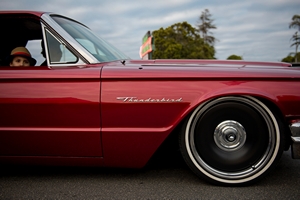|
By accessing or using The Crittenden Automotive Library™/CarsAndRacingStuff.com, you signify your agreement with the Terms of Use on our Legal Information page. Our Privacy Policy is also available there. |

With New Technology, Classic Car Restorations Are Advancing
|
|---|
|
|
With New Technology, Classic Car Restorations Are Advancing
Lucy Wyndham
2 September 2021
Technology might not be the focus of a classic car restoration, but it is the foundation and tool. The benefits that technology can bring to preserving some of the most iconic vehicles of all time has reached a curious pinnacle with the Wall Street Journal’s view that the best way to
save classic Jaguars and Porsches is through electrification. Now, while not all
classic cars will benefit from the electric treatment, there are advancements in the tech that mechanics can deploy that will help them to retain quality for years to come.
Advanced components
The fine
components that make up the classic car can be altered without any perceivable change to the car's operation. The engine will still fire and roar with classic noise, and the external facade of the vehicle can be preserved. Take, for instance, the simple spark plug - one of the most basic components to repair, and something that car owners will often be comfortable changing themselves. The Henry Ford Museum presents one such example from the 1940s - constructed from metal, porcelain enamel and brass, it was advanced for its time. Modern spark plugs can be constructed from
platinum and copper or iridium, and offer greater durability and reliability, at a cost. Iridium is the top-of-the-billing piece, and can be a great way to offer stability to the engine of a classic car without changing much.
The 3D printer
Classic cars often host components that are out of production and out of surplus. It can sometimes be impossible to source new parts to faithfully reconstruct an old vehicle. The advent of 3D printing has changed this. As The Globe and Mail outlines,
3D printing tools can be used to first determine the area requiring repair, and then to pinpoint what material is used - down to the fine balance of the alloys in metal. This can be a lifesaver for those looking to restore a car to its closest original state, and especially so with the exterior of the vehicle, which shows the most change when repaired incorrectly.
The power of networking
Perhaps the most powerful technology of all is the one at the fingertips of most Americans. In early April, Porsche
announced their restoration challenge, which put classic car technicians to the test with a huge inventory of over 60,000 custom parts, retained by the company over the course of the past few decades. Crucial in this challenge is the public, and the internet. Using knowledge gained from social networking or online repositories, the experts in question can build a far greater experience base than they would have on their own, and apply that to a wider field.
Collaboration is often the key in classic car restorations. The internet enables that, and high-tech tools provide the added steady hand to help restore these amazing vehicles. That means more classic cars on the road and in shows, and happier owners.


















